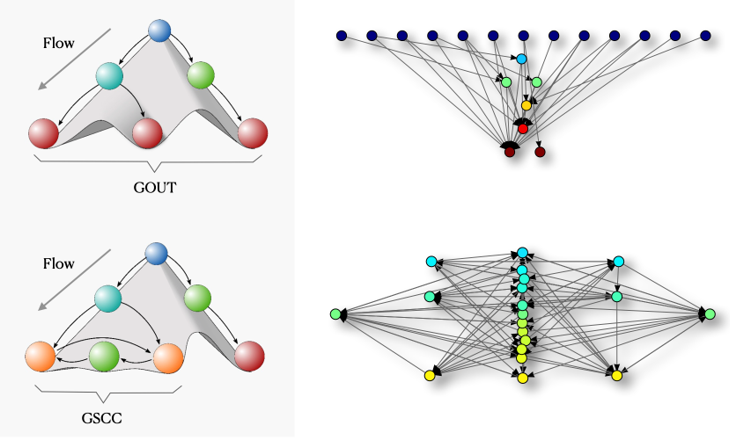Complex systems can be described as the network of interactions between their components. In directed networks, information, energy and matter flow in dominant directions. Undirected networks, on the other hand, cannot easily capture these asymmetries. The local flow of information depends on the node spin, which is a function of the number of incoming and outgoing links attached to it. And yet, how the heterogeneous association between in-degree and out-degree constraints global dynamics remains poorly understood. Here, we develop a new theoretical model to study the relationship between node directionality and global flow dynamics. Our computational analysis of random and scale-free directed networks indicates that structural diversity constrains the dimensionality of reachable dynamical space. These results suggest how local directionality might be an universal driver of global dynamics in many systems, from social networks, to technological systems to the connectome.

